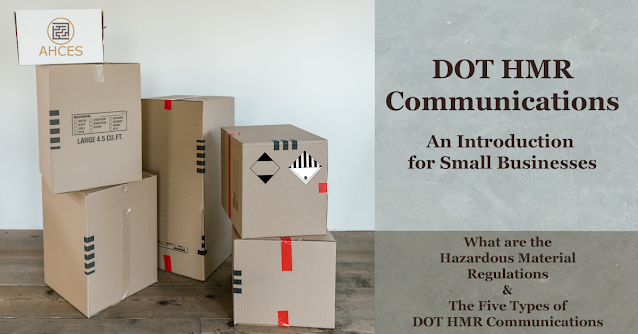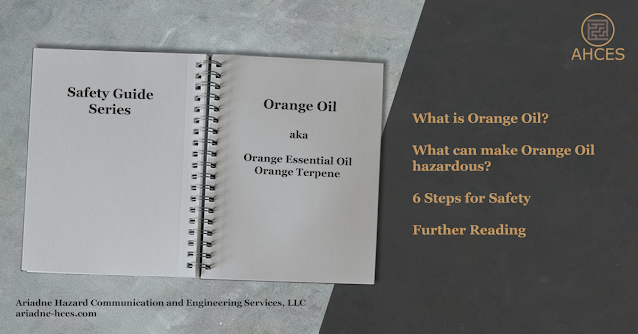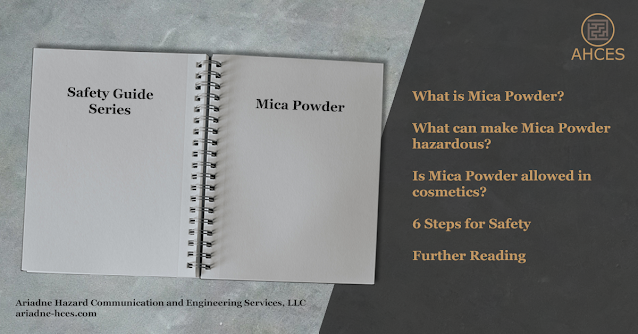DOT HMR Communications – An Introduction for Small Businesses
Properly indicating the type of hazardous materials in a container during transportation is a major part of the communications section of the Department of Transportation's Hazardous Materials Regulations (DOT HMR). These indications are primarily done through a combination of Markings, Labels, and Placards. Despite these terms being rather synonymous colloquially, they each have a separate definition and usage under the DOT HMR Communications Section.
What Are the Hazardous Materials Regulations?
The Hazardous Materials Regulations (HMR) are found
in Title
49, Chapter I, Subchapter C of the Code of Federal Regulations. They
are delegated to the authority of the Pipeline and Hazardous Materials
Safety Administration (PHMSA), which itself is under the larger Department of
Transportation.
The HMR covers the classification of what materials are
considered hazardous for the purposes of transportation, how to communicate
those hazards, related training requirements, and specific instructions for
different types of transportation.
The Hazardous Materials Communications Sections are found under CFR 49 Subpart 172.
The Five Types of DOT HMR Communications
The Hazardous Materials Communications, often shortened to hazcom, are covered in Subparts C through G of Subpart 172. These regulations give instructions on how to properly communicate what hazards are present for a given material, in a given quantity, in a given mode of transportation.
Shipping Papers
Shipping papers include shipping orders, bills of lading,
and manifests. When hazardous material is being transported, this material must
be specifically identified on the shipping papers. Shipping papers used in
hazardous material transport must be retained for two years after the
material is accepted by the initial carrier for recordkeeping purposes.
The full text of the requirements can be found in 49 CFR Part 172 Subpart C.
Marking
Markings include specific descriptive names,
identification numbers, and certain pictograms that are placed on the outer
packaging of hazardous material shipments. The markings for hazardous
materials must be in a durable format, either directly on the surface of the
package or on a label, tag, or sign, they must be displayed in a sharply
contrasting color, such as black on white, and must remain unobscured. All
text, including proper shipping names, must be in English.
The full text of the requirements can be found in 49 CFR Part 172 Subpart D.
Labeling
Labels are pictograms that indicate the Hazard Class or
Division of the hazardous material in a package. A label is generally
used on non-bulk packages. The regulations include specific pictograms and
colors for each Hazard Class and Division. Labels must be at least 3.9 inches
(100 mm) in size on all sides.
The full text of the requirements can be found in 49 CFR Part 172
Subpart E.
OSHA also had labeling requirements for packages containing hazardous chemicals. Learn more about the difference between OSHA Labels versus DOT Labels.
Placarding
Placards are pictograms that the Hazard Class or
Division of the hazardous material in a package paired with an Identification
Number. A placard is generally used on bulk packages and cargo
containers. The regulations include specific pictograms and colors
for each Hazard Class and Division. Placards must be at least 9.84
inches (250 mm) on all sides.
The full text of the requirements can be found in 49 CFR Part 172 Subpart F.
Emergency Response Information
Emergency response information in the HMR covers
information that can be used to mitigate damage and risk of injury in the event
of an accident involving the hazardous material being transported. Emergency
response information includes the proper shipping of the material, the
immediate hazards to health associated with the hazardous material, preliminary
first aid measures, and the immediate response to be taken in the event of an
accident, spill, or fire involving the material. An emergency response telephone
number must also be included. Notably, the emergency response telephone number
must be monitored 24/7 while the hazardous material is being transported. A
number that goes to voicemail is not sufficient as an emergency response
telephone number.
The full text of the requirements can be found in 49 CFR Part 172
Subpart G.
A safety data sheet (SDS), which is a document regulated by OSHA, may qualify as an acceptable document for emergency response information. To meet both requirements, the SDS must use the basic description and technical name of the hazardous material matching the DOT HMR Marking requirements as well as all of the OSHA SDS Requirements.
What the HMR and Hazmat Shipping Means for Small Businesses
There are many different products that fall under the definition of hazardous material for transportation, including types of paints, cleaning chemicals, pesticides, fertilizers, and fuels. There is no exception for small businesses when it comes to meeting the requirements of the DOT HMR.
Running a business has its challenges even at the best of times. Following regulatory requirements minimizes the risks to worker health and safety, property damage, as well as other legal liabilities.
Further Reading
AHCES has a resource page for PHMSA requirements. Check out the Guide to Hazmat Shipping for Small Businesses for more pages like this, with overviews on topics ranging from Hazmat Marking to the different DOT Shipping Classes.
Training on the HMR is an important place to start for hazmat shipping compliance. Learn more about the Hazardous
Material Training Requirements.





Comments
Post a Comment